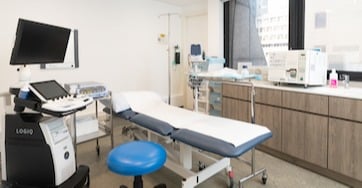Autism Spectrum Disorder (ASD) was first described in the 1940s and was rare at that time. ASD now affects more than 1 in 100 children, and we can draw two important conclusions. Firstly, doctors back then were just as clinically skilled as we are now, so this increase is real and cannot be due to better recognition. Secondly, there must be a biological process driving this increase. It is crucial for society to create coherent connected systems that explore the causes of ASD and find treatments to allow all children with neurodiversity to reach their full potential.
Understanding ASD
ASD is a multisystem disorder that manifests as altered communication, behaviour, and socialisation. An analogy for the Functional Medicine (FM) approach to ASD is that we deal with the hardware, whereas treatments such as ABA deal with the software. Of course, you get the best outcomes when intervening in both areas. All interventions for ASD work better when started early, when the patterns and biological changes are more susceptible to change. Ideally, assessment and treatment should start as soon as ASD is suspected.
Cost Considerations
Cost is always a concern; there are so many private services available for ASD in Hong Kong, some of which are expensive. The cost of an FM approach ranges from very little (e.g., dietary changes and some supplements from iHerb) to the usual, more extensive programme, with investigations early on that usually cost around HK$10,000 but can go up to HK$20,000 at the first visit. The tests do not need repeating more than every six months, and visits to the provider can be monthly. This service can be provided by an FM doctor or allied health professional trained in the biomedical approach to ASD.
Research and Resources
One good resource for starting is the University of Arizona website. They conducted a study that resulted in a significant improvement in nonverbal intellectual ability in the treatment group of 6.7 IQ points and significantly greater improvement in autism symptoms and developmental age. This article has good links to evidence for the FM approach.
Initial Consultation
At the first consultation, we assess baseline functioning and get a full history and examination. Children with ASD usually have comorbidities such as allergies, infections, and gastrointestinal issues. Having these all managed by one doctor is far more efficient and, crucially, takes less time and resources.
Investigations
We will usually carry out some investigations. This requires a blood draw, which is painless; we apply anaesthetic cream. I have put a list of the tests at the end of this article with links for more information. They provide us with a baseline of nutrition (such as iron, vitamin D, and trace elements), toxic exposure to heavy metals, a test on methylation capacity (important for normal brain biochemistry), and, more recently, a test for folate receptor antibodies. Follow-up is 2 to 4 weeks later.
Treatment Plan
The treatment plan is then started. I always encourage a gluten (wheat) and casein-free (GFCF) diet. This has been shown to be helpful for ASD, and I find it improves response to the other treatments. GFCF is healthy; wheat and dairy have only recently been introduced to Hong Kong diets. There will always be supplements to take, which can be a challenge with ASD kids, but there is always a way!
The initial priority, after GFCF, is to correct any nutritional and metabolic problems. This takes time, but improvements will be seen in a month or two. Follow-up is usually monthly but can be less frequent for overseas patients. We can later explore additional areas such as gut health and microbiome, inflammation/Low Dose Naltrexone (LDN) , mould exposure, food intolerances, and mitochondrial function.
Conclusion
This blog is an introduction to the Functional Medicine approach to ASD. The key is to find a programme for each individual child that is achievable and sustainable. In Hong Kong, we have many resources, and there are organisations pushing to make more services available for our neurodiverse children.
CBC:
A Complete Blood Count (CBC) is one of the most commonly performed blood tests in clinical practice. It evaluates overall health and detects a wide range of disorders, including anaemia, infection, and many other diseases.
Key Components Measured in a CBC:
- Red Blood Cells (RBCs): Count and indices such as haemoglobin, haematocrit, mean corpuscular volume (MCV), mean corpuscular haemoglobin (MCH), and mean corpuscular haemoglobin concentration (MCHC).
- White Blood Cells (WBCs): Total count and differential count, which measures the percentages and absolute numbers of different types of white blood cells (e.g., neutrophils, lymphocytes, monocytes, eosinophils, basophils).
- Platelets: Count and indices such as mean platelet volume (MPV).
Ferritin:
A ferritin blood test measures the level of ferritin, a protein that stores iron, in your blood. Ferritin acts as a marker for iron stored in your body, making this test a key tool for assessing iron status and diagnosing related conditions.
- Low Ferritin Levels: Suggest iron deficiency, which may lead to iron deficiency anaemia. This is because ferritin levels drop as the body’s iron stores are depleted.
- High Ferritin Levels: May indicate iron overload (as seen in conditions like haemochromatosis or repeated blood transfusions), chronic inflammatory diseases, liver disease, or certain cancers. Ferritin is also an acute-phase reactant, meaning it can rise in response to inflammation or infection, regardless of iron status.
Further Links
- Whole Blood Elements
- Methylation Profile
- Folate Receptor Antibody Test
- Red Blood Cell Fatty Acids
- Mosaic Organic Acids Test
- Mycotox
- GI Map
.png?width=200&name=Tim%20Trodd%20(1).png)
Dr Tim Trodd
- MBBS (London)
- DCH (London)
- DRCOG (UK)
- MRCGP (UK)
- FHKAM (Family Medicine)
 Central General Practice
Central General Practice
 Repulse Bay
Repulse Bay
 Clearwater Bay
Clearwater Bay
 BodyWorX Clinic
BodyWorX Clinic
 Central Specialist Clinic
Central Specialist Clinic
 MindWorX Clinic
MindWorX Clinic
 Partner Clinics
Partner Clinics
 Family Clinic
Family Clinic
 OT&P Annerley Midwives Clinic
OT&P Annerley Midwives Clinic

.png?width=60&name=Tim%20Trodd%20(1).png)




















































